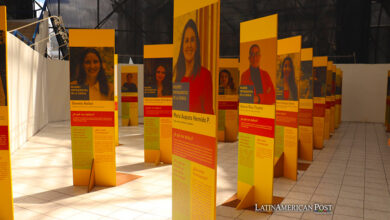What Would It Be Like To Live on Another Planet?
Have you ever wondered what it would be like to wake up on another planet? Some of the aspects to consider when thinking about living elsewhere in the universe would be gravity, weather, or even the length of days.

The Woman Post | Catalina Mejía Pizano
Listen to this article
While some scientists say that humanity is surpassing the environmental limits of planet Earth, some are carefully studying the conditions of nearby planets and thinking of ways in which society could adapt to them. Some experts are investigating the possibility of exploring and finding planets that could potentially resemble the Earth. But what would a perfect world look like? An ideal planet would require the right temperature, atmosphere, and orbit around a star to support human life. Even though scientists have discovered various exoplanets, none of them could provide a safe environment for human life.
Let's look at some of the main elements to consider when trying to visualize life on two of the main planets we already know and a satellite (the Earth's Moon):
1. Mars: Nagin Cox is a spacecraft engineer at NASA's Jet Propulsion Laboratory. She currently works on the team that manages the United States rovers on Mars. In a recent Ted Talk, she mentioned some of the challenges of working on Mars. A Martian day is 40 minutes longer than a day on Earth. Hence, a year on Mars lasts 1.88 Earth years. Like our planet, Mars has seasons because of its tilt upon its axis. The Southern hemisphere points away from the sun when the Earth is farthest from it, causing colder winters and hotter summers than those in the Northern hemisphere. If we lived in the Northern part, we would experience seven months of spring, six months of summer, five months of fall, and four months of Winter. The Martian average temperature is minus 80 degrees Fahrenheit, but it fluctuates from -195 F to 68 F in the summer. The climate variations cause massive dust storms that may last a few days. Gravity on Mars is just 38% of Earth's, making it harder to run or make fast movements.
2. Venus: First, let's not forget that Venus is the hottest planet in the solar system, and it is known for its dangerous conditions for human life. Assuming that technology would help us prepare to overcome the hazards, let's analyze what life would be like. A day in Venus lasts a little under 6000 hours, so if you sleep for 8 hours, you would have only used 0.1% of your day. The sun rises once every 177 Earth Days, meaning you would only enjoy two sunrises per year. But that's not all, the sun rises in the West and sets in the East, and there are enormous active volcanoes. Venus is hot enough to melt lead! The pressure is 92 stronger than on Earth, causing a sensation of being over a half-mile deep in the ocean. The weather forecast would be 870 F all year long because of its proximity to the sun and the greenhouse effect caused by dense clouds of carbon dioxide.
Also read: STEM CAREERS AND HOW TO GO BEYOND STUDYING
3. The Earth's Moon: The Earth's moon was formed billions of years ago from the debris created in the collision between the Earth and another Planet-like body. Assuming that we had the technology to overcome the dangers of the moon, let's look at what life would be like. A day would last 600 hours, and days are dark because there is no atmosphere to scatter the sun's light. When the sun rises, the temperature escalates to 250 F, and there is a beautiful view of Earth. There are large craters and mountains. Gravity is only one-sixth of the Earth's, and you would frequently be bombarded by small meteor particles because there is no protective atmosphere to prevent this. Did you know that the moon faces moonquakes? They are similar to moderate Earthquakes and won't destroy your home but will make you feel sick since they can last up to a full hour!




